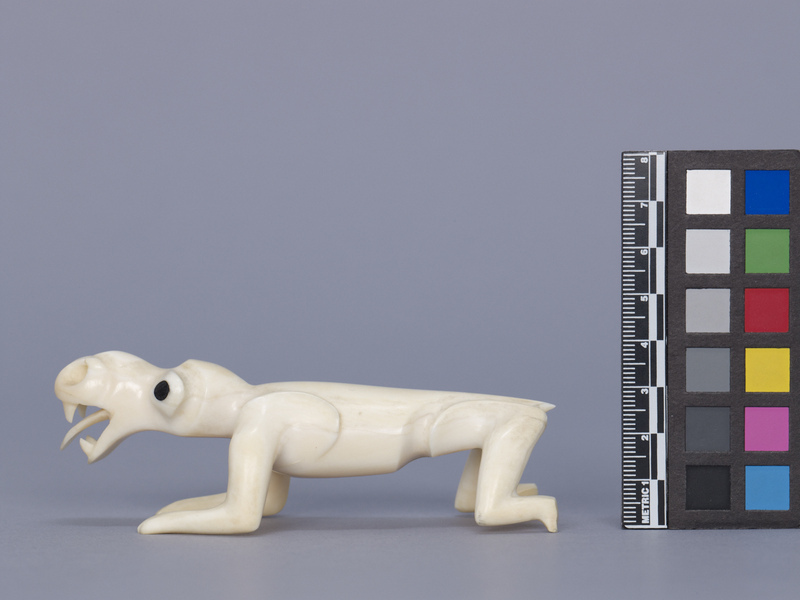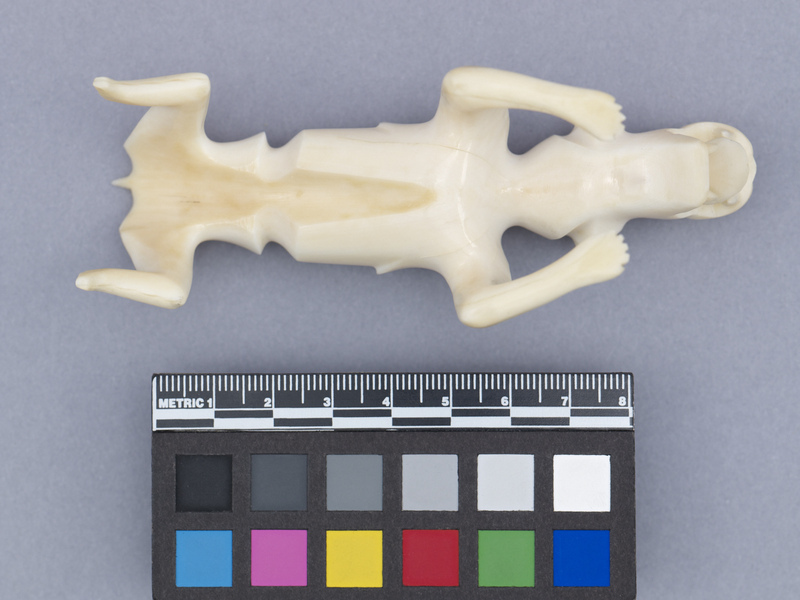Figure Item Number: 2807/1 from the MOA: University of British Columbia




Description
Carved tupilaq (tupilak). The head of the creature appears to be an animal with black circular eyes, a large snout with big round nostrils, an open mouth with four canines and its tongue sticking out through the teeth. The body of the creature is in the position of someone crawling on all fours with their arms bent, but also with a small carved point where a tail would be.
History Of Use
In Greenlandic the word ‘tupilak’ means an ancestor soul or spirit, and previously referred to mysterious, sinister spirits. Today, however, the word is mainly used to refer to small figures carved in tooth, bone or stone for the tourist market. Traditionally, a tupilak spirit could be called upon to help against a foe by a shaman secretly creating a figure made from various bones or other parts of animals and then singing a spell over it. The tupilak was often put out to sea so that it could find the enemy itself and kill him. However, this course of action was not without risk because if the tupilak’s victim had greater powers of witchcraft than its creator, he could repel its attack and instead send the tupilak back to kill its originator. In the twentieth century, when Europeans began exploring East Greenland, tupilaks were produced from materials such as wood, bone, tooth and antler points for the Europeans to collect as souveniers.
Item History
- Made in Greenland before 1965
- Collected in Point Barrow, Alaska, USA during 1964
- Owned by Sherri Zysk before July 28, 2010
- Received from Sherri Zysk (Donor) on July 28, 2010
What
- Name
- Figure
- Identification Number
- 2807/1
- Type of Item
- figure
- Material
- baleen ? and sperm whale tooth
- Overall
- height 3.8 cm, width 4.2 cm, depth 11.5 cm
Who
- Culture
- Inuit
- Previous Owner
- Sherri Zysk
- Received from
- Sherri Zysk (Donor)
Where
- Holding Institution
- MOA: University of British Columbia
- Made in
- Greenland
- Collected in
- Point Barrow, Alaska, USA
When
- Creation Date
- before 1965
- Collection Date
- during 1964
- Ownership Date
- before July 28, 2010
- Acquisition Date
- on July 28, 2010
Other
- Item Classes
- carvings & sculpture
- Condition
- good
- Accession Number
- 2807/0001